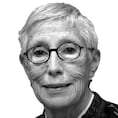Husseiniya, a bleak, breeze-block built town on the edge of Damascus, is a rare Syrian good news story.
Located off the highway to the international airport east of the capital, Husseiniya hosts an "unrecognised camp" for Palestinian refugees who fled their homeland after the establishment of Israel in 1948. Before the conflict began they made up 45 per cent of the town's population of 100,000.
They fled on December 17th, 2012, when armed groups seized Husseiniya and the nearby besieged Yarmouk camp and quarter. They began to return last August after insurgents were driven out, the town was cleared of ordnance, and electricity was partially restored. Initially 200-300 families hurried back out of a total of 6,500 who have returned.
Maher al-Wawi, Damascus field officer for the UN Relief and Works Agency for Palestinian Refugees (UNRWA), says “the first people did not know what they would return to”. Although the degree of destruction was relatively light – 110 homes destroyed – the returnees were shocked by the scale of looting and damage. “They were not prepared psychologically,” he says.
UNRWA and the authorities will try to ensure there is support for other organised return operations. Husseiniya, the first district in the Damascus area where people were allowed to come back, is seen as a success for the “reconciliation” programme, an example to be followed .
Schools pillaged
Returnees were shocked because household items and water tanks were stolen, electricity wires pulled from walls, power transformers and water pumps were carried away and the health centre and schools pillaged.
“People came back because they are poor and cannot afford to rent flats in safe areas,” says Maher, who left Yarmouk with his family ahead of the 2012 exodus.
Return has been facilitated by the 26-member reconciliation committee. Its members are from the local community and are determined to help people come back. This can be difficult as returnees have to repair and refurnish their own homes. The cost runs to millions of Syrian pounds.
The government has restored basic infrastructure and UNRWA the schools, the ration distribution centre and the clinic. Two doctors see 300 patients a day – a dentist and midwife are due to arrive this week.
Three repaired and refurbished schools, one with morning and afternoon shifts, opened on time for the academic year. On walls still perfumed with fresh paint, students have arranged a display of art work for Human Rights Day. In a large classroom, staff have mounted an exhibition of traditional Palestinian dresses and crafts.
Boys in warm jackets and hats perform warm-up exercises in a school yard. When we enter their classroom, tiny bundled-up girls and boys practise their English with “Good morning . . . How are you?” They learn the language from the first grade.
Fruits of hard work
Security is tight in Husseiniya – only former residents are permitted to return. But residents come and go, many to jobs in Damascus, a 20-minute commute. Local craftsmen are busy restoring homes and workshops. Oranges, apples, carrots, and cabbages brighten displays in the small souq across from one of the few pancaked and collapsed buildings in the town.
So far this winter Syria has had mostly cold but sunny days, lessening the suffering of millions of displaced. Rain and snow can be expected. Of the 18 million Syrians in the country, 12 million – 5.6 million of them children – are in need of assistance. Of these, 7.8 million have fled their homes and many are living in tents, buildings under construction, rented flats, relatives' homes and schools. Four million live in hard-to-reach areas. The country's basic services are severely challenged.
Complex conflict
Damascus-based International Committee of the Red Cross (ICRC) spokesman Pawel Krzysiek says the Syrian operation is “the largest in the world”, dealing with a very “complex conflict involving multiple groups, [and] a huge humanitarian problem. There is a lack of food, clothing, shelter. The ICRC supports local bakeries and collective kitchens providing meals for people who cannot afford to buy cooking gas” and gives material for people who dwell in “skeleton buildings” to seal off living spaces.
He points out that before the war, “Syria produced most of its pharmaceutical and medical requirements. The pharmaceutical industry has been destroyed and people cannot get basic health services or common medicines. People are dying from diseases that can be avoided.”
The ICRC and the Syrian Arab Red Crescent, the lead agency for all humanitarian activities, “help people survive”, but the “solution must be political”, says Krzysiek.







